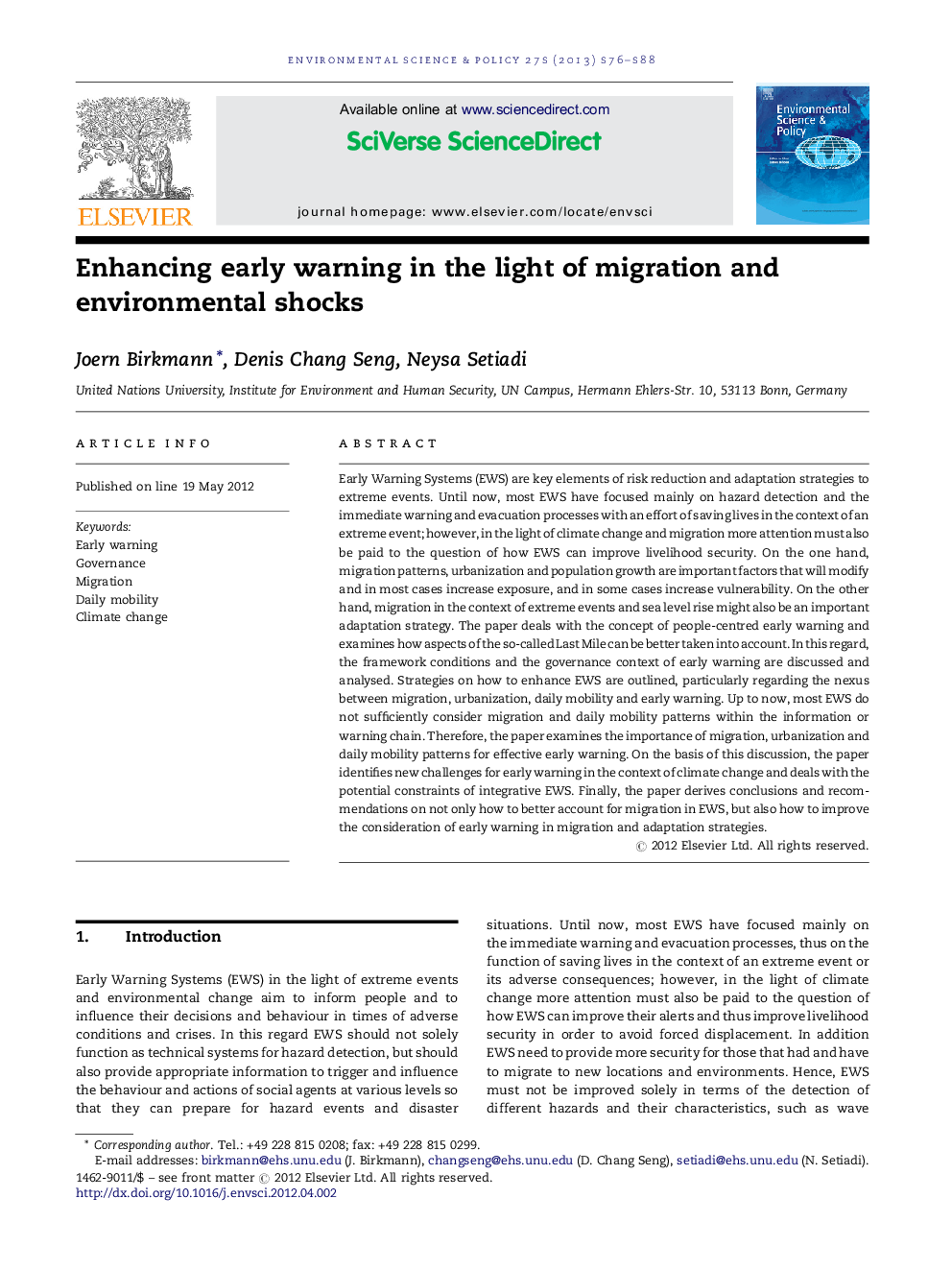| کد مقاله | کد نشریه | سال انتشار | مقاله انگلیسی | نسخه تمام متن |
|---|---|---|---|---|
| 1053739 | 946719 | 2013 | 13 صفحه PDF | دانلود رایگان |

Early Warning Systems (EWS) are key elements of risk reduction and adaptation strategies to extreme events. Until now, most EWS have focused mainly on hazard detection and the immediate warning and evacuation processes with an effort of saving lives in the context of an extreme event; however, in the light of climate change and migration more attention must also be paid to the question of how EWS can improve livelihood security. On the one hand, migration patterns, urbanization and population growth are important factors that will modify and in most cases increase exposure, and in some cases increase vulnerability. On the other hand, migration in the context of extreme events and sea level rise might also be an important adaptation strategy. The paper deals with the concept of people-centred early warning and examines how aspects of the so-called Last Mile can be better taken into account. In this regard, the framework conditions and the governance context of early warning are discussed and analysed. Strategies on how to enhance EWS are outlined, particularly regarding the nexus between migration, urbanization, daily mobility and early warning. Up to now, most EWS do not sufficiently consider migration and daily mobility patterns within the information or warning chain. Therefore, the paper examines the importance of migration, urbanization and daily mobility patterns for effective early warning. On the basis of this discussion, the paper identifies new challenges for early warning in the context of climate change and deals with the potential constraints of integrative EWS. Finally, the paper derives conclusions and recommendations on not only how to better account for migration in EWS, but also how to improve the consideration of early warning in migration and adaptation strategies.
► The paper deals with key issues of people-centered early warning governance.
► New challenges for Early Warning in the context of daily mobility patterns and migration are discussed.
► The paper examines how aspects of the so-called ‘last-mile’ can be better taken into account.
► An in-depth analysis of daily mobility patterns in the hazard prone coastal city Padang in Indonesia is presented.
► Recommendations to enhance Early Warning Systems in the context of climate change are formulated.
Journal: Environmental Science & Policy - Volume 27, Supplement 1, March 2013, Pages S76–S88